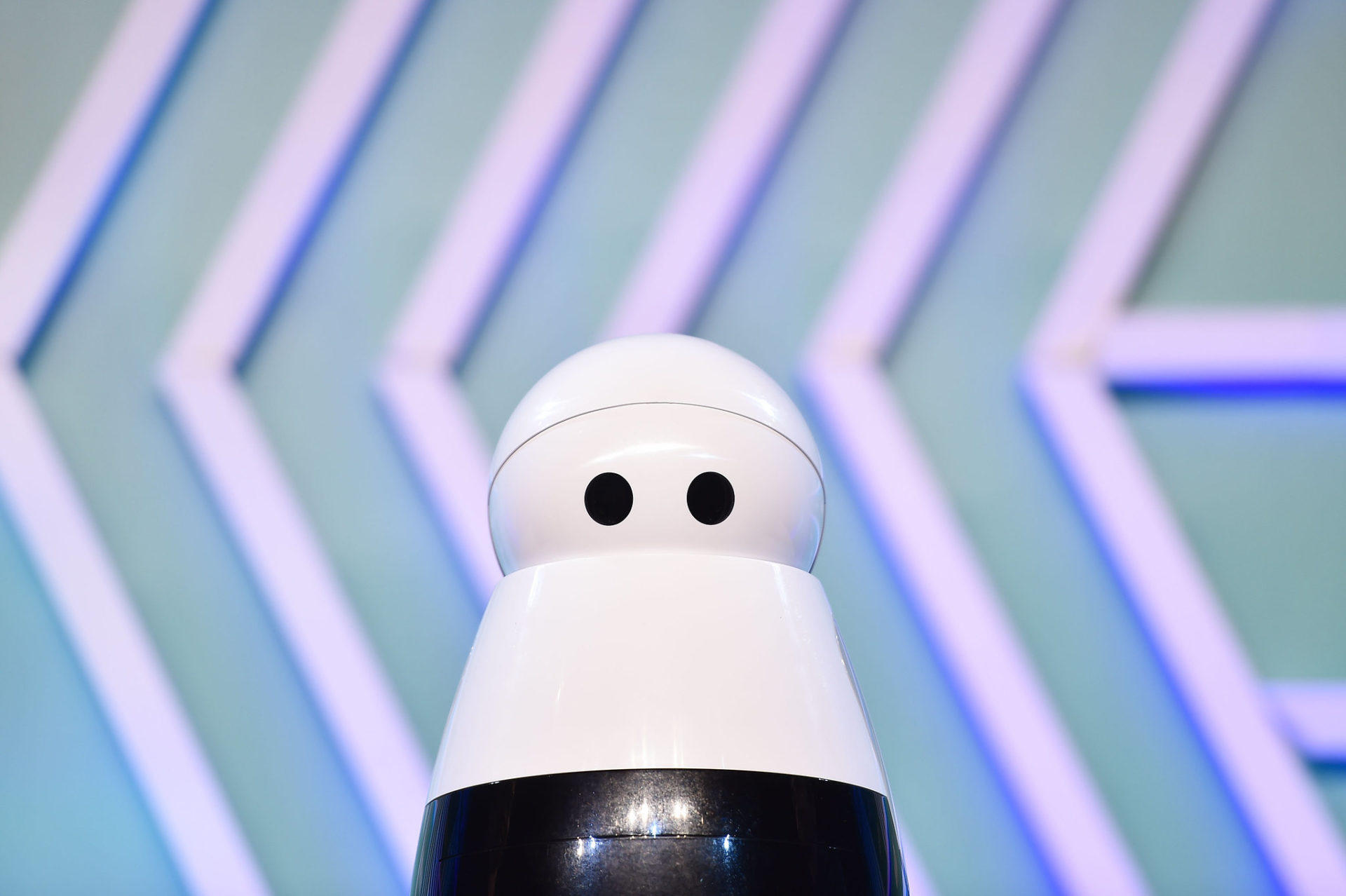“Collision 2018 – Day Two” by collision.conf is licensed under CC BY 2.0
Raised by Robots?
Amelia DeFalco and Luna Dolezal
Since the term “robot” was coined just over 100 years ago in a play by Czech writer Karel Čapek, in which the robots look, behave and work like real people, there has existed both fear and fascination that robots will take over more and more of the work that humans do. A recent explosion in the development of what are known as “care robots” has seen robots start to take over some of the labour involved in caring for humans, particularly when considering experiences of old age, illness or disability. However, other recently developed care robots, such as iPal, Vevo, Cocotto and Kuri, have been developed not for the purposes of assisting in the care of those who are frail, ill or vulnerable, but instead as companions for children, aimed at alleviating the burdens of care on parents, particularly mothers. These robots are intended to entertain, motivate and comfort their human child companions, and while their abilities remain limited, roboticists and robot ethicists alike predict increased robotic intervention in childhood.
Like artificial wombs, these artificial caregivers, or “robot nannies” as they are frequently referred to in the media, provoke a great deal of curiosity and concern. At present, there is insufficient evidence to determine whether so-called nanny robots do (or might) pose a threat to infant and child development and well being. However, in the realm of science fiction, the trope of the “mother robot” has been well-developed, where human infants are raised by robots, often seemingly without any detriment to their psycho-social or emotional development. Caregiving companion robots, frequently termed “Mother,” appear in a range of recent contemporary science fiction texts, including the novels The Mother Code (Stivers 2020), A Closed and Common Orbit (Chambers 2016), and television programs and films like Raised by Wolves (2019-) and I Am Mother (2019). In most cases, the robot mothers, whether benign or malignant, raise normative human children and the narrative hinges on whether these human offspring will opt to abandon (or escape, as the case may be) their machine “mother’s” care in favour of more species appropriate companionship. In I Am Mother and Raised by Wolves,robots gestate and rear humans who eventually discern the ethically dubious lengths their robot mothers will go to to ensure the survival of their human children. In both the film and television program, fetuses are gestated in artificial wombs, in glass tubes or plexiglass cubes, that produce healthy infants that the artificial mothers proceed to nurture and assist. The resulting children are normatively human in their appearance, habits, traits, postures and communicative styles. While they do raise moral and ethical questions, these texts promote the idea that there is nothing socially or developmentally problematic in being raised by robots.
The assumption that parts of “maternity” can simply be replaced with machines stems from a humanist vision of that conceives of human subjects as individual and independent units, while also being driven by, as Irina Aristarkova notes, a patriarchal “devaluation of maternal participation in the process of human development” (Aristarkova 2005, 51). Such a view ignores the complex embodied relationality that is the foundation for human development from gestation through infancy to early childhood. For example, evidence from neuroscience, developmental psychology, anthropology and sociology demonstrates that infants require regular tactile contact from caregivers for sustenance, development and socialization (Stack 2001). Human touch is a crucial, formative means of communication and care from the earliest stages of human life; experiences of touch in infancy and childhood facilitate organism survival and development and shape a person’s lifelong affective capacities and preferences. “Maternal” technologies, real and imagined, largely ignore the formative, fundamental role of touch as “the most basic mammalian maternal behavior” (Feldman 2011, 373), treating gestation and child rearing as straightforwardly mechanical behaviours and tasks that can be fulfilled by any appropriately programmed body.
Debates and concerns about “maternal” technologies often centre around questions of the risks and benefits of increased technological intervention into pregnancy and child rearing, while also circling around enduring feminist concerns regarding whether these technologies herald the liberation of women from biologically-determined motherhood, or a dystopian age of patriarchal reproductive control. However, there is much less focus on the particular, material implications of “maternal” technologies and the complex relational networks they are designed to replace and/or augment. From a posthuman, phenomenological perspective, human contact matters, not only for survival and flourishing, but for the very ontological shape of human being. Different relations, different assemblages produce different organisms. What organisms might ectogenetic, robotic assemblages produce?
Related Reading:
Aristarkova, Irina. “Ectogenesis and Mother as Machine.” Body and Society, vol. 11, no. 3, 2005, pp. 43-59.
Feldman, Ruth. “Maternal touch and the developing infant.” The Handbook of Touch: Neuroscience, Behavioral, and Health Perspectives, edited by Matthew John Hertenstein and Sandra J. Weiss, Springer, 2011, pp. 373–407.
Field, Tiffany. Touch. Cambridge, MIT Press, 2003.
Stack, Dale M. “The Salience of Touch and Physical Contact During Infancy: Unraveling Some of the Mysteries of the Somesthetic Sense.” Blackwell Handbook of Infant Development, edited by Gavin Bremner and Alan Fogel, Oxford, Blackwell Publishers, 2001, pp. 351-378.
van den Broek, Egon L. “Robot Nannies: Future or fiction?” Interaction Studies, vol. 11 no. 2, 2010, pp. 274-282.
Related blog posts


